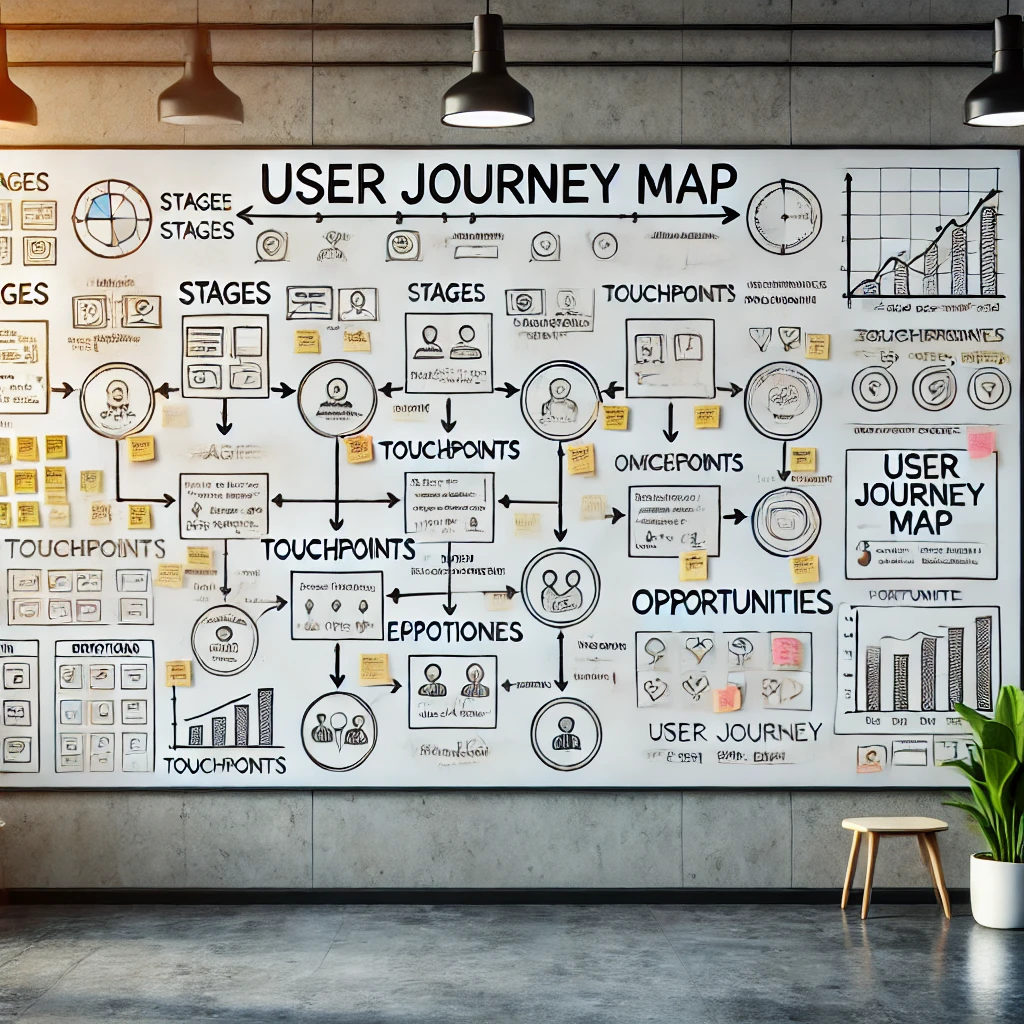
Overview:
This module delves into the essential components of a user journey map, explaining how each element contributes to a comprehensive understanding of the user experience. You'll learn to define stages, identify touchpoints, capture emotions, and recognize opportunities within a user journey.
Content:
What are stages?
- User journeys are divided into distinct phases, representing different periods in the user's relationship with the product.
- Example: Rajesh's stages include waking up, opening his store, interacting with customers, having lunch, closing the store, and bedtime.
What are touchpoints?
- Touchpoints are various interactions users have with the product or service, including website visits, customer service interactions, and in-app experiences.
- Example: Rajesh's touchpoints involve preparing breakfast, checking inventory, serving customers, and unwinding with leisure activities.
What are emotions?
- Understanding user emotions at different touchpoints is crucial for identifying pain points and moments of delight that impact user satisfaction.
- Example: Rajesh feels satisfaction during breakfast, frustration from leg pain, and enjoyment watching cricket.
What are opportunities?
- Analyzing the user journey reveals areas for improvement and innovation, helping to create a seamless and enjoyable user experience.
- Example: Educating Rajesh on better health practices and leveraging his phone usage for support.